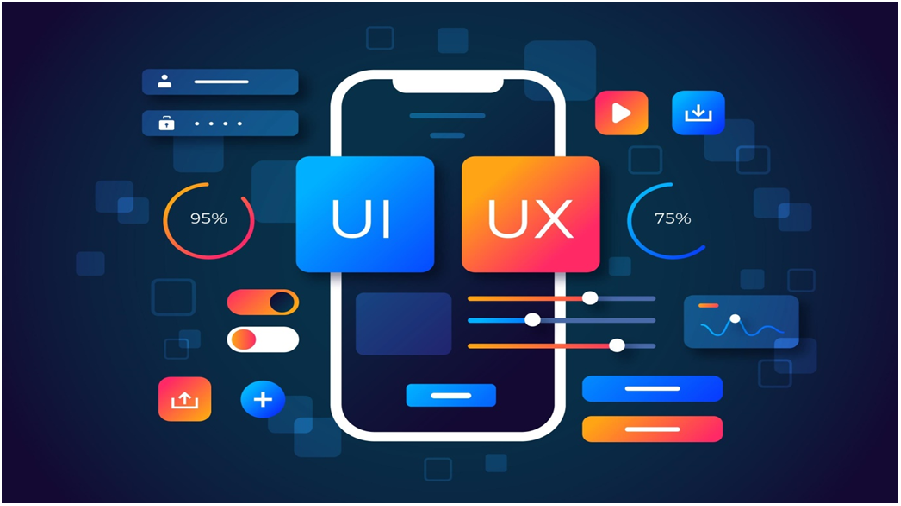The Importance of User Experience (UX) Design in Tech

Intro
In an era where digital technology is at the heart of most daily interactions, user experience (UX) design plays an increasingly vital role. A powerful tool for businesses, UX design significantly influences how users perceive and interact with a product, platform, or service. Understanding the importance of UX design in the tech world is paramount to not only achieving customer satisfaction but also gaining a competitive advantage and making a strong economic impact.
Understanding the Concept of User Experience Design
—————————————
User experience design, commonly referred to as UX design, is a crucial process that aims to elevate a user’s interaction with a product or service. It seeks to boost satisfaction levels by enhancing the usability and accessibility of a product, thereby making the interaction more enjoyable for the user. UX design is an all-encompassing term that includes the full scope of a user’s experience with a product. This means it considers every element of a product’s design, its branding, function, and most importantly, its usability.
In the context of the technology sector, UX design is like the architecture of digital interfaces. The goal is to make the user interface (UI) as intuitive, engaging, and user-friendly as possible. Essentially, it’s all about simplifying and optimizing the way users interact with a digital platform or product. A well-executed UX design ensures users can easily navigate and complete tasks on a platform, increasing their overall satisfaction and willingness to use the product more often.
The beauty of UX design is its focus on creating a seamless connection between the user and the digital environment. It seeks to understand and cater to the user’s needs, making the interaction with the product not just merely functional but also delightful. This approach helps to build a positive user experience, encouraging users to not only stay longer but also return to the platform in the future.
In short, user experience design is a process that plays a pivotal role in making a product, service, or platform more enjoyable, accessible, and easy to use for the user. It’s the art of creating a user-centric digital environment where the user’s needs and expectations are met with efficiency and elegance.
The Role of UX Design in Customer Satisfaction
—————————————
UX design is a powerful influencer of customer satisfaction. When users have an effortless interaction with a product, they are likely to develop a strong emotional bond with it. This emotional connection is built by providing an experience that is intuitive, seamless, and enjoyable. With the use of UX design, businesses can drastically minimize user frustration and enhance product adoption, leading to higher customer loyalty.
Returning to a product or service is generally driven by a positive experience. A delighted customer not only contributes to repeat business but also promotes the product through word-of-mouth, indirectly influencing others to use it. This domino effect can lead to substantial growth in customer retention and overall business expansion.
UX design’s impact on customer satisfaction is profound and multi-layered. It makes the digital experience feel personalized and carefully tailored to the user’s needs, giving them a sense of being valued and understood. This connection with users goes beyond functionality and taps into the emotional aspect of their interaction with the product, promoting long-term satisfaction and loyalty. The quality of this experience can make or break a user’s relationship with the product, making UX design a critical factor in driving customer satisfaction.
UX Design as a Competitive Advantage
—————————————
In the tech industry’s highly competitive landscape, UX design has emerged as a game-changing factor. It provides a unique edge to businesses looking to differentiate their offerings from the competition. UX design, when executed effectively, results in products that are not only visually appealing but also easy to use and navigate. This is especially crucial in a time where users have an abundance of choices and minimal tolerance for complex or non-intuitive interfaces.
Companies that prioritize UX design inherently create products that resonate better with users. An interface that enables users to achieve their goals quickly and easily increases their affinity towards the product. This intuitiveness and visual appeal tend to leave a lasting impression on users, hence making them more likely to prefer it over competing products.
The integration of UX design into a company’s strategy also fosters a loyal user base. Users are likely to stick with a product that offers a smooth, enjoyable, and trouble-free experience. Over time, this loyalty transforms into a solid market position, which is invaluable in today’s fast-paced and evolving tech industry.
But the impact of UX design doesn’t stop at user retention. It also plays a key role in attracting new users. People are naturally drawn towards interfaces that are simple, clean, and efficient. This attractiveness can be leveraged to entice new users and expand the company’s reach.
In essence, UX design serves as a critical element in carving out a competitive advantage. It has the power to make a product stand out in a saturated market, attract and retain users, and secure a formidable presence in the tech landscape. Hence, businesses that wish to rise above their competitors need to place UX design at the forefront of their strategy.
The Economic Impact of UX Design
—————————————
The economic significance of UX design is more profound than one might initially realize. When businesses choose to invest in UX design, the financial returns can be substantial. This stems from heightened user engagement and an increase in conversion rates, leading to a solid return on investment (ROI). Research by Forrester reveals a well-thought-out UX design can yield conversion rates up to 400%, a number that cannot be ignored by businesses aiming for growth and profitability.
Additionally, investing in UX design can bring about cost savings in other areas. For example, a robust UX design can help minimize customer acquisition costs. This is because a well-crafted, user-friendly product or service naturally attracts and retains users, reducing the need for extensive marketing efforts.
Likewise, the costs associated with customer support can also be reduced through effective UX design. When a product or service is designed with the user’s needs and experiences in mind, it is less likely to encounter issues that require customer support, leading to savings in support costs.
Moreover, effective UX design helps diminish the need for extensive changes or maintenance to a product or service. This is because UX design takes a proactive approach, considering potential issues and user needs during the design process, rather than reacting to problems after the product has been launched. Consequently, this can save companies significant amounts of time and money.
To sum up, the economic benefits of UX design are manifold, providing a tangible return on investment through increased conversion rates, reduced acquisition and support costs, and fewer maintenance needs. This underscores the fact that UX design is not just about enhancing the user’s interaction with a product or service, but it also has substantial financial implications that contribute to a company’s bottom line. Therefore, any business looking to achieve economic growth should consider UX design as a strategic investment.
The Future of UX Design in Tech
—————————————
As we look towards the horizon, the role of UX design in the technology sector is expanding and adapting to include new, exciting possibilities. The increasing prevalence of cutting-edge technologies such as artificial intelligence (AI), virtual reality (VR), and voice recognition is paving the way for unprecedented innovations in UX design.
AI, for instance, is transforming the field by enabling more personalized user experiences. By harnessing the power of machine learning algorithms and big data, UX designers can craft interfaces that adapt to individual users’ needs, preferences, and behavior patterns. This leads to a more tailored, relevant interaction, resulting in increased user satisfaction and engagement.
Virtual reality, on the other hand, opens up an entirely new dimension for UX design. By creating immersive virtual environments, UX designers can offer users experiences that transcend the confines of traditional screen-based interfaces. This not only enhances user engagement but also allows for the exploration of novel interaction paradigms and usability principles.
Meanwhile, voice recognition technology is redefining the way users interact with digital platforms. As more devices and applications adopt voice interfaces, UX designers need to reconsider traditional design principles to accommodate this shift. This creates opportunities for more natural, conversational interactions that can improve accessibility and ease of use.
These advancements hint at a future where UX design is no longer just about creating intuitive, user-friendly interfaces, but about crafting highly personalized, immersive experiences that deeply resonate with users. However, with these exciting prospects come new challenges. Designers will need to continuously evolve their skill sets and methodologies to leverage these technologies effectively. Furthermore, issues related to privacy, data security, and ethical design will become increasingly important as these technologies become more integrated into our daily lives.
Overall, the future of UX design in tech promises to be dynamic and transformative. As we continue to push the boundaries of what is possible with technology, the importance of UX design will only continue to grow. The challenge for businesses and designers alike will be to stay abreast of these developments and leverage them to create experiences that truly delight and engage users.
Conclusion
The value and influence of UX design in the technology industry is undeniable. Its pivotal role in shaping user interaction, influencing customer satisfaction and loyalty, and carving a competitive edge makes it a vital component of any successful business strategy. Furthermore, UX design brings substantial financial rewards by boosting conversion rates and reducing costs related to customer acquisition, support, and maintenance. As technology progresses towards more individualized and immersive digital experiences, the function and significance of UX design are bound to magnify. Consequently, organizations striving to excel in this digital epoch must ensure UX design takes precedence in their strategies and consistently innovate to satisfy the ever-changing user demands. As we venture forward, the challenge for businesses and designers alike will be to harness the power of emerging technologies effectively and ethically to curate experiences that truly captivate and delight users. The importance of UX design in the tech world is not only here to stay but is destined to flourish.




